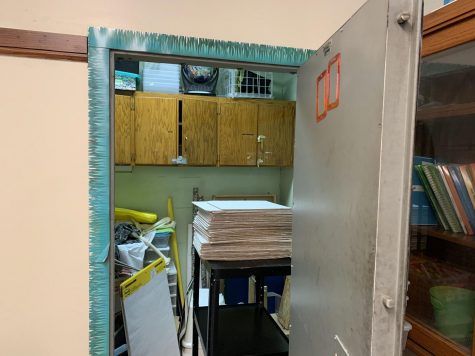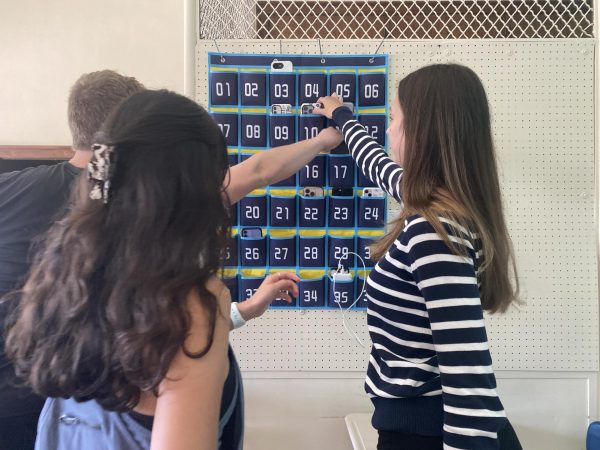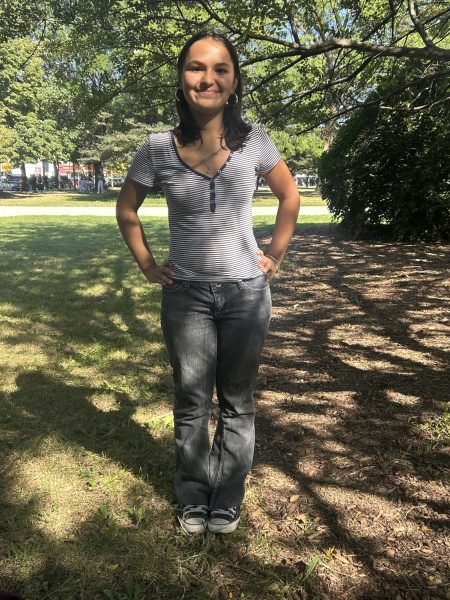Vaults unlock a link to Lane’s past
Every day while walking from class to class, students pass parts of Lane’s history.
On the third floor near Door A, a mysterious vault, room 311A, is indented into the wall as if it is asking not to be found. Obviously a relic of another era, the vault is an aged dark-olive metal with golden trim, inconspicuous only because its grandeur and antiquity are to be expected of all parts of Lane’s revivalist gothic edifice.
This year marked the 85th anniversary of Lane’s current building’s opening, but there seemed to be little celebration. The building on the corner of Western and Addison first opened its doors in 1934, after a tumultuous construction process.
Soon after its construction began, the Great Depression struck, leading to the building standing as an incomplete structure for multiple years. Construction was not completed until the Works Projects Administration stepped in and provided a grant for its completion, according to a post on the Chicago Historic Schools blog by Elizabeth A. Patterson, a historic architecture researcher.
As a result of time, detailed records regarding Lane’s architectural decision-making are not easily accessible. Paul Gerhardt Sr., and John C. Christensen, the architects who worked for the Chicago Board of Education in charge of Lane’s construction, have since passed away. The exact logic behind the installation of the vault remains unknown.
Most students walk past 311A without so much as glancing at it. In a school where academic rigor and fast-paced teenage drama take the front seat, it almost seems discouraged that a student should spend their precious time to inquire about a rusty piece of Lane’s past.
Although Vault 311A is unique in its hallway location, its make is not alone in Lane. Eight other vaults reside in less public locations throughout the school, most notably on the fourth floor where many classrooms feature vaults.
Most teachers use the space as storage. The vault’s walls are lined with old cabinets and shelves just barely supporting the weight of the miscellany they are gorged with; or the vault is left dark and barren in disrepair, a step ladder, maybe a can of paint or a roll of butcher paper stored in there for the sake of making use of the space.
Mr. Wawrzyczek, who currently teaches AP Environmental Science, used a vault last year when his class was located in a fourth-floor classroom.
“I think they were originally built as prep rooms, storage rooms for chemicals and stuff. That would make the most sense,” Wawrzyczek said. “It was just an additional storage space for me.”
Lane’s age and history make for widespread and branching theories for the initial intent of these vaults. When 311A, the vault most publicly located, is considered, it is often shrouded in mythologic conspiracy, its use so unapparent that students are forced to conjecture.
“I’d like to think there are military-grade materials, like maybe uranium,” said Ken Li, Div. 078. “Realistically, cleaning materials.”
Hazardous cleaning supplies are stored in another location in which students’ curiosities lie. The building’s basement, which is separated from the first floor by a thick layer of concrete and rebar, acted as a fallout shelter during periods of nuclear panic.
According to Mr. Luis, the Building Operations Manager, students are not allowed in the basement because there are too many tools and too much hazardous material.
Luis noted that many of the fourth-floor vaults, which are mostly accessible to teachers, are now a storage space for similar types of materials.
According to Ms. Pflaum, who teaches class in room 311, the vault next-door now stores piles of math textbooks.
“The teachers now store a lot of chemicals or plastic or glassware or stuff like that,” Luis said. “but in the past, it was also for tests.”
When Lane’s population peaked around 9,000 during the Depression, vast numbers of tests were stored in the vaults, likely to prevent cheating by students, Luis said.
Tests have since gone digital, as have students’ interests. The culture and curiosities of high school (and the world) throughout this past decade has been taking place on small light-up screens rather than physical surrounding, including the ancient, unexplored structure of our school.
This transformation is emblematic of the shifts Lane has taken over its 85-year history, from a world-renowned technical school to the home of one of the best high school computer science departments in the country.
Lane’s vaults, although functionally insignificant today, serve as a portal to another time that few remember. Back to the time when, Luis said, the basement housed a boat-shop and rifle range. When students made airplanes’ fuselages in Room 138 and cars a few doors down.
History lies within small parts of Lane that await discovery, curiosity and questioning.


Your donations directly fund the Lane Tech student journalism program—covering essential costs like website hosting and technology not supported by our school or district. Your generosity empowers our student reporters to investigate, write, and publish impactful stories that matter to our school community.
This website is more than a publishing platform—it's an archive, a research tool, and a source of truth. Every dollar helps us preserve and grow this resource so future students can learn from and build on the work being done today.
Thank you for supporting the next generation of journalists at Lane Tech College Prep!

Tobias Straus is an Assistant Editor for The Warrior. His interest in journalism is a result of constantly listening to WBEZ, his local NPR station, since...



